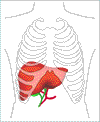Barbecue season is upon us! The following food safety tips were adapted from a Health Canada Information Update.
Also, remember to stay abreast of food recalls. Pathogens like E. coli can survive freezing…so even frozen meat can harbour dangerous bacteria. Canada experienced a major ground beef product E.coli O157:H7 related recall earlier this year. PLEASE check your frozen burgers! JA
Related foodborne pathogens
Eating undercooked meat and other foods that have come into contact with raw meat can result in foodborne illnesses. Symptoms vary by organism, but can include nausea, vomiting, diarrhoea, abdominal pain, fever, headache, dizziness and neck stiffness. Young children, pregnant women, the elderly and people with weakened immune systems may be more at risk. Common barbecue related foodborne pathogens include E. coli, Salmonella and Campylobacter.
You can help lower your risk of foodborne illness by handling and cooking raw meat carefully.
Storing
•Raw meat should always be stored in the refrigerator or cooler at 4ºC (40ºF) or below.
•If you are storing raw meat in a cooler, make sure that it is packed with ice and the cooler stays out of direct sunlight. Avoid opening it too often.
•Ensure meat products are well sealed and that ice water doesn’t come in contact with stored meat products. This can lead to cross-contamination.
•Make sure to keep raw meat and other foods separate to avoid cross-contamination.
Clean
•Remember to wash your hands and other utensils, like cutting boards, counters and knives, carefully with soap and warm water before and after handling raw meats. This helps avoid potential cross-contamination and prevent the spread of foodborne illness.
When you grill
•Colour alone is not a reliable indicator that meat is safe to eat. Meat can turn brown before all bacteria are killed, so use a digital food thermometer to be sure.
•To check the temperature of meat that you are cooking on the barbecue, take the meat off the grill and insert the digital food thermometer through the thickest part of the meat.
•If you are cooking a beef hamburger, take the patty from the grill and insert the digital food thermometer through the side, all the way to the middle of the patty.
•If you’re cooking more than one patty or pieces of meat, be sure to check the temperature of each of the pieces.
•Use clean utensils and plates when removing cooked meats from the grill.
•Remember to wash the thermometer in hot, soapy water between temperature readings.
•Always remember to keep hot food hot until you are ready to serve.
Always follow these safe internal temperatures to make sure that the food that you are cooking is safe to eat
| Food |
Temperature |
|
Beef, veal and lamb (pieces and whole cuts)Medium-rare Medium Well done |
63°C (145°F) 71°C (160°F) 77°C (170°F)
|
| Pork (pieces and whole cuts) | 71°C (160°F) |
|
Poultry (e.g. chicken, turkey, duck)Pieces Whole |
74°C (165°F) 85°C (185°F)
|
| Ground meat and meat mixtures (e.g. burgers, sausages, meatballs, meatloaf, casseroles)Beef, veal, lamb and pork Poultry |
71°C (160°F) 74°C (165°F)
|
| Egg dishes | 74°C (165°F) |
| Others (e.g. hot dogs, stuffing, leftovers) |
74°C (165°F) |
It is estimated that there are approximately 11 million cases of food-related illnesses in Canada every year. Many of these illnesses could be prevented by following proper food handling and preparation techniques.
First Respones’s Comments:
Well, Barbecue season is here – you only have to drive with the windows down in a residential area around supper time to know that! That mouth watering smell just wafts into your own back yard or into your car as you drive by. But are you paying attention when cooking on your grill? It is so easy to get sick from undercooked meat or improperly stored meat. With the heat wave we have just had, it doesn’t take much for that nasty bacteria to start growing and voila, you end up ‘talking to the great white telephone’ or even worse, in Emerg. Not a pleasant experience, I can tell you (from my own experience!). Do your bit – make sure your food is cooked properly now that Barbecue season is upon us and that your guest and family have a memorable meal at your home. Tell me what you are doing to make sure your meat is cooked properly in the comment box below…

 Did you know that May Is Hepatitis Awareness Month?
Did you know that May Is Hepatitis Awareness Month?
